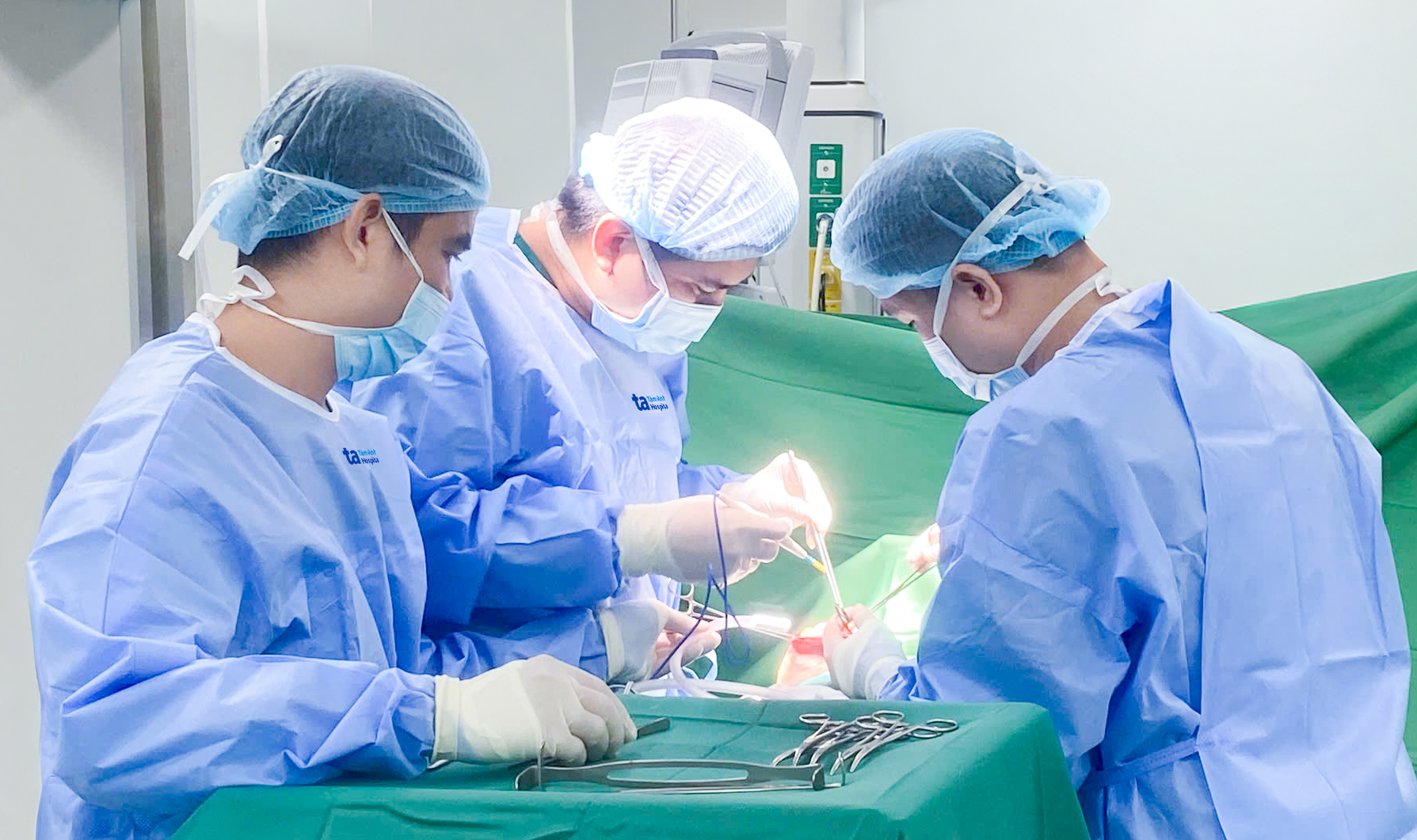The movable lump in Tuyet's breast was palpable, and her right breast appeared taut, lumpy, and red. Ultrasounds and mammograms at Tam Anh General Hospital in Ho Chi Minh City revealed a BIRADS 4A lesion in her right breast. An 8 cm mass in the central area of her right breast caused breast asymmetry.
Doctor Pham Tuan Manh, from the Breast - Head and Neck Surgery Department, explained that fibroadenomas typically grow slowly, with an average diameter of about 2.5 cm. These solid breast lumps are usually painless, round, well-defined, and firm or rubbery.
 |
Doctor Manh (center) and the surgical team excising the right breast tumor. Photo: *Minh Tam* |
Doctors surgically removed the entire tumor and reconstructed the breast using the remaining tissue to minimize the defect and maintain symmetry. Tuyet recovered well and was discharged after one day. The biopsy confirmed a benign tumor, requiring only regular follow-up appointments.
Doctor Manh noted that while recurrence is possible, the likelihood is low because the entire tumor was removed. However, post-operative monitoring and regular breast cancer screenings are still necessary. After the removal of a large, benign tumor, patients can consider breast implants or fat grafting for cosmetic purposes without impacting their health.
Women can develop one or more fibroadenomas in one or both breasts. In some cases, these tumors shrink or disappear spontaneously within a few months or years. Giant fibroadenomas are most common in women aged 14-35 but can occur in older patients. They are usually benign.
The condition often presents no symptoms and is usually detected through screenings. Early detection allows for effective and less costly treatment. Doctor Manh emphasized that fibroadenomas can be mistaken for breast cysts, breast cancer, or phyllodes tumors. Women 40 and older should have annual mammograms for early breast cancer detection.
Minh Tam
*The patient's name has been changed.
| Readers can submit questions about cancer here for doctors to answer. |












